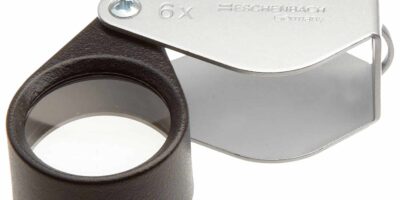The 1958 D Wheat Penny: Understanding Its Value
Coin collecting remains a popular hobby, and wheat pennies are among the most sought after by enthusiasts. The wheat penny, minted from 1909 to 1958, features a design with two wheat ears surrounding the words ONE CENT on the reverse. Among these, the 1958 D wheat penny holds a particular interest.
The 1958 D wheat penny was produced at the Denver Mint. D indicates the mint location, ensuring collectors know where their coins originated. It was the last year this iconic design was minted, transitioning to the Lincoln Memorial reverse in 1959.
The Intrinsic Value
Wheat pennies, particularly those minted between 1909 and 1958, are made of 95% copper. This composition contributes to their intrinsic material value. As copper prices fluctuate, the base value of these coins can also change. However, in most cases, the material value surpasses face value only if copper prices significantly rise.
Factors Affecting Collector Value
The collector value of the 1958 D wheat penny depends on several factors: its condition, rarity, and historical significance. Collectors evaluate a coin’s condition using a grading scale, ranging from Poor (P-1) to Perfect Uncirculated (MS-70). Five categories dominate the evaluation for minted coins: circulated grades, an uncirculated state, errors, mint marks, and special editions.
Condition & Grading
- Circulated Condition: Coins that were in regular use and show wear are considered circulated. Their value is generally lower, often ranging from 3 to 50 cents for the 1958 D wheat penny, depending on the wear.
- Uncirculated Condition: Coins that have not entered circulation retain their original mint luster, usually valued higher. A typical uncirculated 1958 D penny might range from $1 to $5, depending on its luster and strike.
- Mint State (MS): These coins are graded from MS-60 to MS-70. The closer to MS-70, the higher the value, reflecting the coin’s original condition, with few if any signs of handling.
Errors and Varieties
Error coins attract substantial interest among collectors. These result from mistakes during the minting process. Common errors include double dies and off-center strikes. While the 1958 D wheat penny doesn’t primarily feature notorious errors, any discovery of such flaws may significantly boost its value.
Mint Marks and Production Numbers
The production number of the 1958 D wheat penny is crucial. Approximately 800 million units were minted, making them less rare compared to some earlier pennies. The large production reduces scarcity, meaning individual coin value leans more heavily on condition and uniqueness rather than rarity.
Market Demand and Historical Context
Surprisingly, demand also influences value. Sometimes, nostalgia fuels this demand more than rarity or material content. The wheat penny’s association with early to mid-20th-century America adds to its allure. Collectors are driven by a desire to complete sets or achieve a perfect grade within a series. The 1958 D penny encapsulates the end of an era, marking the last year of the wheat design.
Investment Potential
Coins as investments require careful consideration. While items like the 1958 D penny can hold or grow in value over time, it’s not always guaranteed. A diversified investment portfolio shouldn’t rely heavily on collectible coins. Nevertheless, for those already passionate about numismatics, collecting offers a blend of enjoyment and potential profit.
Grading companies, such as the Professional Coin Grading Service (PCGS) or the Numismatic Guaranty Corporation (NGC), provide certified gradings. These third-party evaluations give confidence to collectors, influencing price heavily.
Finding and Acquiring 1958 D Pennies
Acquiring a 1958 D wheat penny can be straightforward. Often they appear in old personal collections, and occasionally in circulation as part of pocket change. However, dedicated collectors may seek reputable dealers or attend coin shows. Online platforms and auctions provide various avenues, from single purchases to bulk acquisitions.
When buying online, ensure you rely on well-reviewed sellers. It’s vital to have quality images of both sides of the coin and access to its grading report if available. Understanding the description and terms of sale will avoid potential misunderstandings or disappointments.
The 1958 D Penny’s Role in Numismatics
The 1958 D wheat penny continues to be an integral part of coin collecting history. Its value, while not skyrocketing, reflects broader trends in numismatics and the ongoing appeal of coin collecting.
Preserving these coins through proper storage enhances their value. Experts recommend storing coins in a cool, dry environment. Coin holders or albums protect the metal from environmental damage and help maintain its condition over time.
Collecting wheat pennies, and coins in general, is about more than monetary gain. It involves exploring history, connecting with past eras, and preserving cultural artifacts. The 1958 D wheat penny exemplifies this, serving as a bridge between minting styles and historical periods. As collectors seek these small yet significant pieces of history, their value continues to be defined by both the market and personal sentiment.
